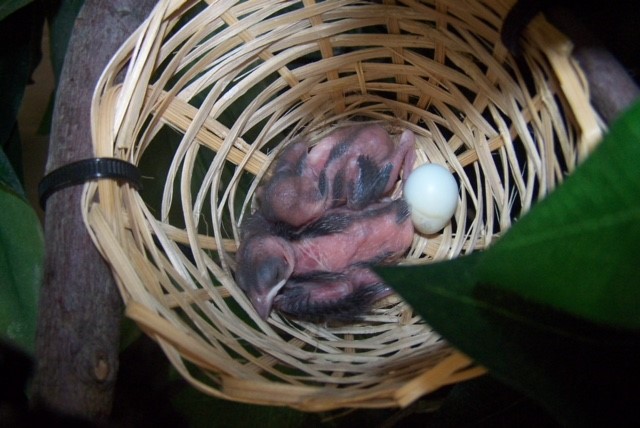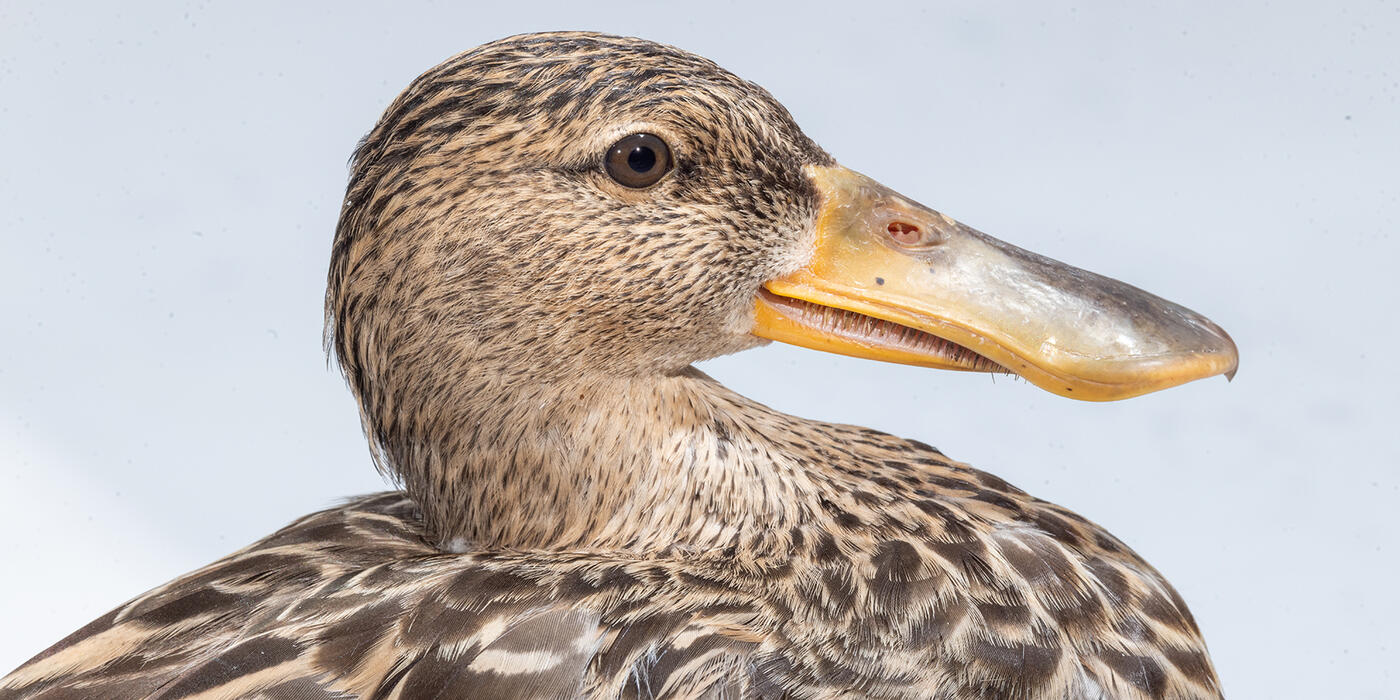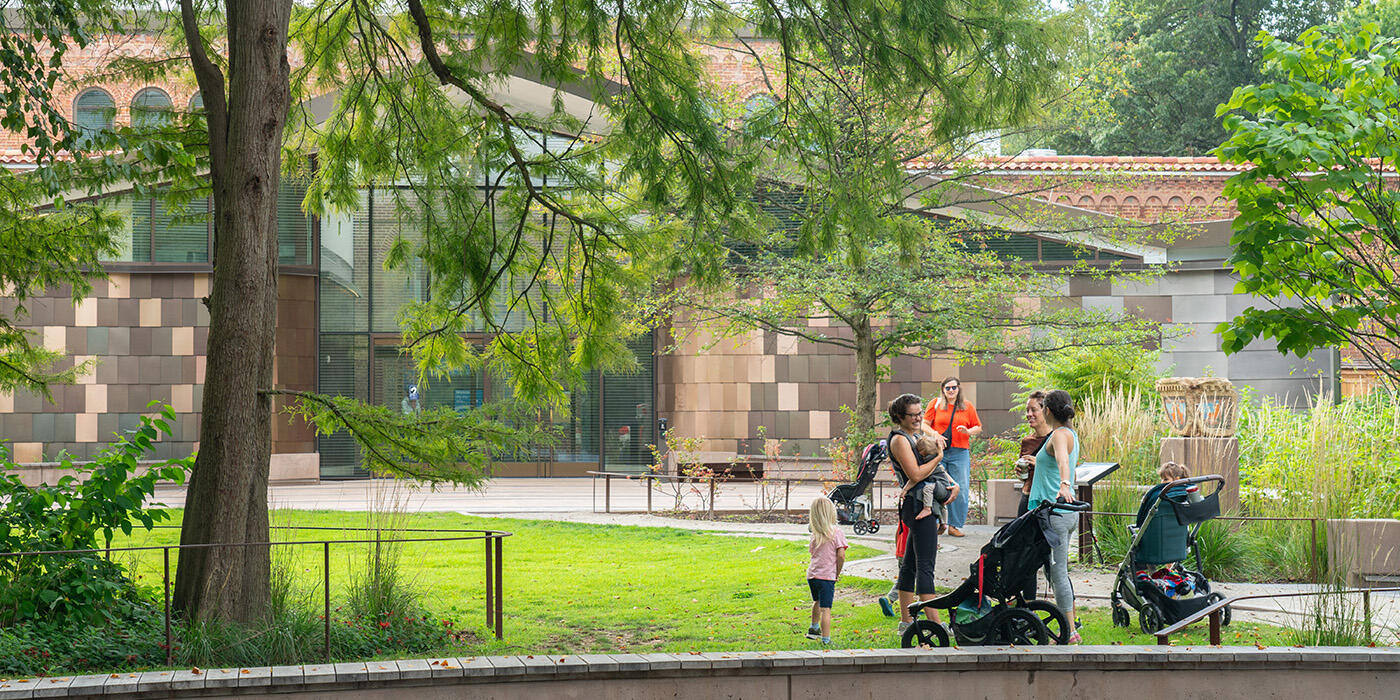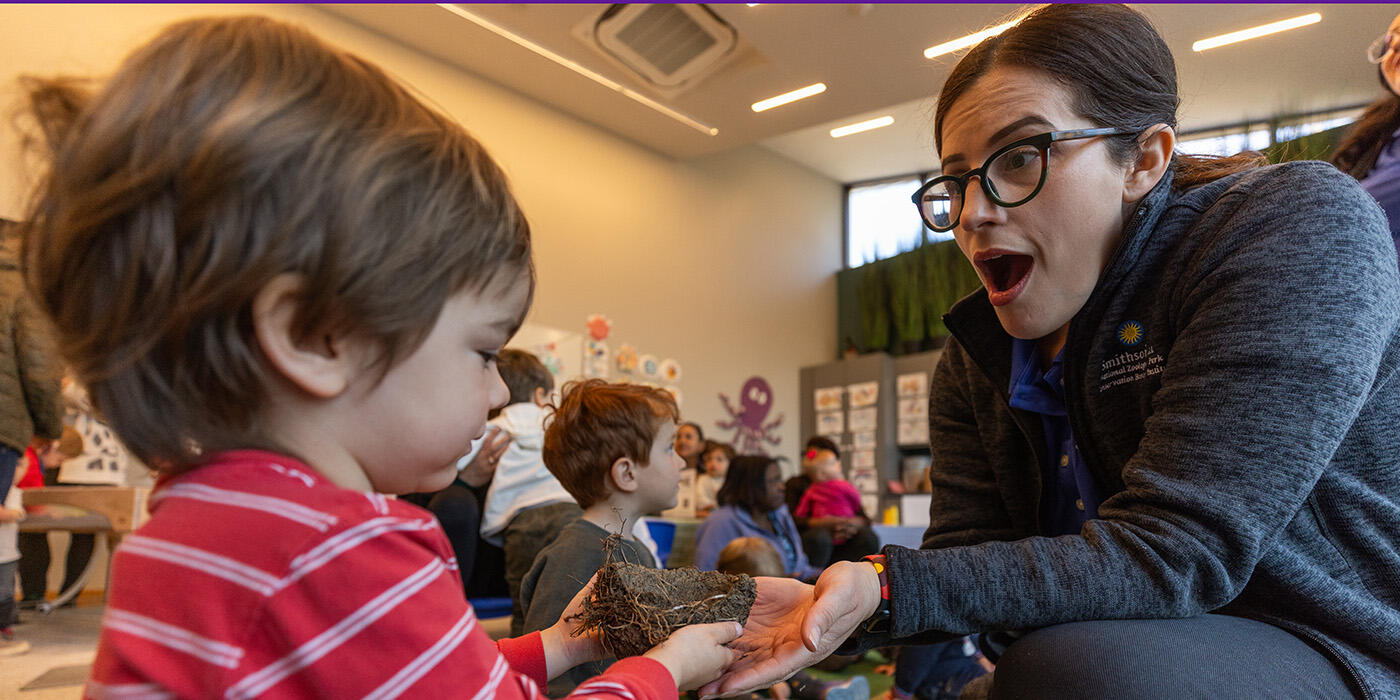Two Indigo Buntings Hatch at Smithsonian’s National Zoo
Bird House keepers at the Smithsonian’s National Zoo are celebrating the hatching of two indigo bunting chicks—a first for the Zoo and the North American population in human care. The female indigo bunting laid four eggs in an off-exhibit area between July 15 and July 20. The first chick hatched July 27, but it died later that day. The second and third chicks hatched July 29 and July 31, respectively, and are thriving. A fourth chick did not hatch. The surviving chicks fledged Aug. 8 and will remain off exhibit while the Bird House is undergoing renovations; the building is expected to reopen in 2021.
“Cracking the code of breeding North American migratory songbirds in human care while they are still common is vital for future conservation efforts,” said Sara Hallager, curator of the Bird House. “I am extremely proud of our team and this success. Breeding these native birds will provide a deeper understanding of their biology, reproduction and behavior and will greatly contribute to in situ conservation efforts.”
The chicks’ parents are wild-caught and arrived at the Zoo in May 2016. By looking at the color of the birds’ plumage, keepers estimated that they are at least 2 years old. Animal care staff have been closely monitoring the chicks via a closed-circuit cam to allow the parents to bond with and care for their chicks. Keepers continue to provide the birds with a nutritious diet of pellets, fruit, hardboiled eggs, insects and greens. Indigo buntings often have multiple clutches during a season, and animal care staff report that the female is already preparing for a second clutch of eggs.
Native to North America, indigo buntings are considered “least concern” by the International Union for Conservation of Nature. Their range is expansive; during breeding season, these migratory birds can be found across the United States—from Texas to Florida, and in all states north toward Canada. In winter, they migrate south and reside in the Caribbean, Central America and the northern tip of South America. In recent years, wild indigo bunting populations have been decreasing due to habitat loss and fragmentation.
The Zoo’s historic 1928 Bird House is currently closed as it transforms into “Experience Migration,” a first-of-its-kind attraction that immerses visitors in the annual journeys of western hemisphere birds. With almost 100 species of birds, “Experience Migration” and the surrounding bird plateau will be the first zoo exhibition of this size that focuses on the cyclical journeys of migratory songbirds, waterfowl and shorebirds integral to North, Central and South American ecosystems. Through themed walk-through aviaries, interactive experiences and dynamic educational programming, “Experience Migration” will inspire and connect visitors to birds in whole new ways.
Zoo visitors can see birds on exhibit at the Cheetah Conservation Station, Small Mammal House, American Trail and Amazonia.
# # #
Photo Credit: Kathy Brader, Smithsonian’s National Zoo


